Statement of Faith
21 abril, 2014Statement of Faith
21 abril, 2014Historical Precedents in an International Context

The Pentecostal Movement and the CGMJIC
The history of Christianity considers “The Third Great Awakening” a very important time period, which started in 1857, because it is where the Pentecostal Movement started, which is where the CGMJCI would later on adopt some of its foundations.
In 1900, Charles Parham, an independent preacher from the Holiness Movement, developed a doctrine called “Initial Evidence,” which stated that the guaranteed to confirm the baptism with the Holy Spirit was to speak in tongues. He started a Bible institute called “Bethel” in Topeka, Kansas – USA, where he instructed his students on the doctrine of the “initial evidence.” One of them, William Seymour, traveled to Los Angeles and held a meeting on April 14, 1906 at the African Methodist Episcopal Church. On that day, it was recorded that they experienced spiritual ecstasy along with the gift of tongues. This was called the “Azusa Street Revival,” which is considered nowadays as the catalyst to spread Protestant Fundamentalist Christianity—or Evangelical Pentecostal—to all others continents. This ‘revival’ lasted for three years.
Attendees were baptized with the Holy Spirit. They sang in tongues and danced. In addition, they witnessed miracles and healings. Many congregations joint this new “Pentecostal Movement,” churches with Methodist and Wesleyan beliefs.
The churches that were founded as a result of this movement, sprung forth in the South East of the United States, mainly in African American communities. Their doctrine was based on speaking in tongues as the guarantee of the baptism with the Holy Spirit, who helps each believer to live a life in holiness in order to reach salvation.
This is, therefore, one of the current foundations of the CGMJCI, which the Pentecostal movement from the first decade of the 20th Century also believed in. This precedent went through many historical and geographical phases, before it was ever consolidated in Colombia, which happened in the ‘70s.
For example, preaches and missionaries who came from Europe and former British colonies, took this “phenomenon of the baptism with the Holy Spirit” to Canada, Europe, Asia, Africa and Australia. In fact, it even reached India and Hong Kong. T.B. Barrat, a Norwegian preacher, took this doctrine to Europe (1906) where he started the Pentecostal movement in Norway, Sweeden, Denmark, Germany, France and England. His successor, Alexander Boddy, spread Pentecostalism in Great Britain. Another one of his followers, Jonathan Paul, did the same in Germany. In 1907, Luigi Francescon took Pentecostalism to Italian churches in the United States, Argentina and Brazil. In 1908, John Lake took it to South Africa; Giacomo Lombardi to Italy (1908); two Swedish missionaries arrived in Belem do Pará in Brazil and founded the Assemblies of God in Brazil. This, Pentecostalism started to reach and grow in other countries.
These churches, which came from the 1906 Pentecostal Movement, were founded by visiting preachers who went back to their home cities. Each church was autonomous with independent names, but they shared the same foundation that Charles Parham established in 1900. Little by little, the Pentecostal doctrine made its way to several states in America. For example, in 1914, a group of 300 white Pentecostal preachers decided to create a Pentecostal Fellowship called, “the General Council of the Assemblies of God.”
In spite of sharing the same foundation, new discussions led to the first divisions among Pentecostals. For example, one segment believed that it was just necessary to baptize in the name of the Lord Jesus, while others argued that it was necessary to mention the Father, Son and the Holy Spirit. This controversy resulted in the birth of the Oneness Pentecostalism, who did not believed in the Trinity of God, but rather in three aspects of one and the same God. The Assemblies of God rejected this doctrine and, in consequence, several pastors and believers departed from the in 1916. Hence, first the Pentecostal Assemblies of the World were born, and later on, the United Pentecostal Church International.
Historical Precedents in an International Context
Baptism with the Holy Spirit
The Pentecostal Movement and the CGMJI
The Role of Women in the Pentecostal Church
Neo-Pentecostalism and the CGMJI